You can download the full PDF of this article here
Customer value can be conceptualized as a trade-off between the customer’s perceived benefits and perceived sacrifice. Day, back in 1999 introduced the value equation proposing that the value a customer perceives itself as gaining by making a purchase can be represented as the difference between the perceived benefits and the perceived sacrifices arising from making the purchase.
To put this in a formula: Benefits customer – Sacrifices customer = Value customer.
But looking into this a bit more in detail, are the variables in the formula easily measurable items? We know that in practice both sacrifices and benefits may include intangible elements which, in spite of the difficulty of evaluating them in monetary terms, are nevertheless important to the customer. Looking it from a different perspective, value can be seen as the ratio of benefits to sacrifices which can be conveniently expressed as follows:
Benefits customer / Sacrifices customer = Value customer.
The impact of Digital Customer Experiences on Customer Value
In my first article of this series, I introduced the concept of Digital Experiential Value which can be defined as the customer’s perception, which stems directly or indirectly from his or her digital experience of the product/service. From that perspective it is interesting to look into the impact of Digital Customer Experiences with Customer value as argued by different scholars.
For this article, I am particularly interested to understand if we can apply the suggested approach by Blois (2003), where he argues that the formal analyses of value equation can be used to illuminate customer value, but then in the Digital Experiential Value context.
Customer Value Map
Let’s first look at a simple figure displaying the way how customer value and the benefit / sacrifice trade-off work. The horizontal axis quantifies sacrifices as perceived by the customer; the vertical axis shows perceived benefits.
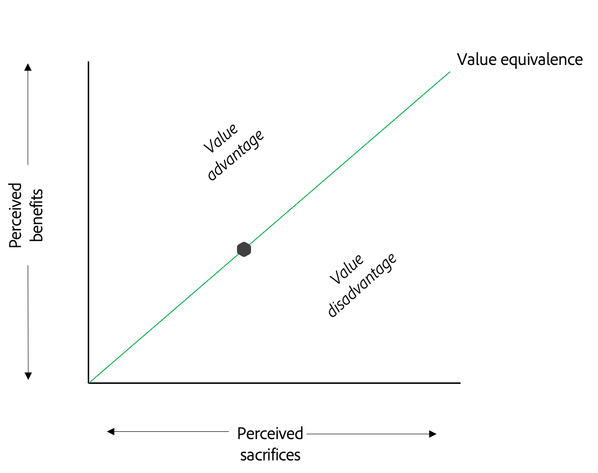
Fig 1. Value map with ratio model of Customer Value
Obviously, as an organization, the goal is to shift the customer value equivalence line to the left, into the value advantage area, and find ways to stay ahead of the competition. For an organization it is paramount to move the customer value ‘needle’ in such a way that it has the least impact for you on supplier value.
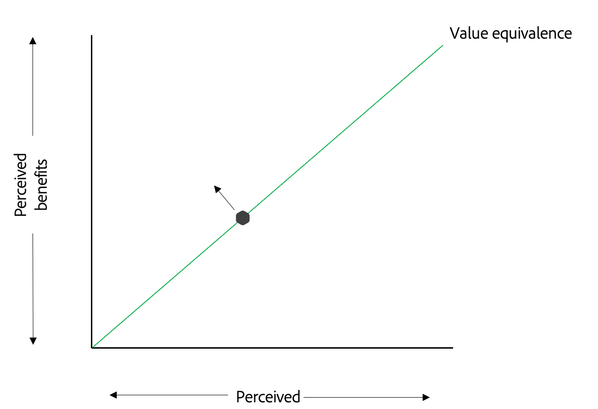
Fig 2.Increase Customer Value
Because the way how you see customer value as a trade-off, can also be applied to supplier value. Supplier value is the trade-off between perceived benefits for an organization and perceived sacrifices. I’ll come back later on this topic, but keep in mind, when increasing the value for a customer, this will have impact on the sacrifices of an organization, but how and to which extend? That is an interesting area to explore further.
Customer Value equations
The term trade-off has been used widely but is also clearly a vague term that could apply in many ways. In the context of this article, the trade-off that relates customer value to perceived costs and perceived benefits, two equations are proposed;
In both equations, benefits include all relevant customer perceived benefits whether this is tangible, emotional, economic, and non-economic. For sacrifices, all relevant cost elements are included such as price and non-price but also non-tangible elements like frustration or irritation.
When applying simple mathematical logic, value equation 1 demonstrates that a 1% increase in benefits, will always lead to a 1% increase in customer value. And an 1% increase in sacrifice leads to a 1% decrease in customer value.
For the ratio model, equation 2, the story is different. When customers perceive a high digital experiential value, a small change in sacrifice is perceived as a little effect. But where customer perceive low value, a small change in sacrifice will have large effect on the perception of value. In a similar way, when customer perceive low value, a small change in benefit will lead to a substantial change in value. In that sense, we can argue that sacrifices tend to have a larger leverage on customer value than do benefits. Especially when the value is high. In a figure it looks like the following, the leverage of sacrifice has substantial impact on benefits and value.
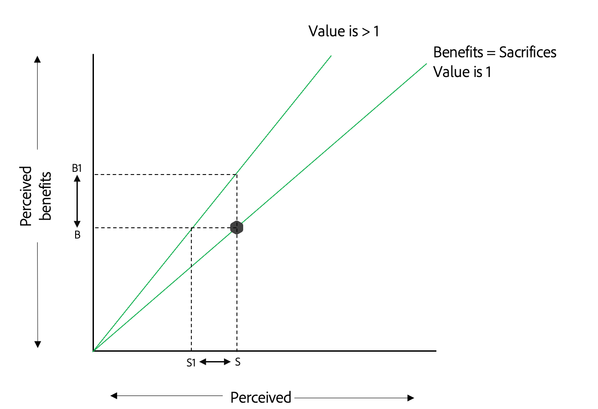
Fig 3. Leverage of perceived sacrifice on customer value
Digital Experiential Value equations
In the early days of digital customer experiences, the focus has always been on increasing the benefits for customers. Today, we see more and more emphasis on the sacrifices customers experience during the different stages of the customer journey. In my previous article, I explained both conscious and unconscious customers mind during the different journey stages and argued that organizations should ‘consciously’ break parts of the journey to give room for the customer to sacrifice.
In the light of this insight and in the digital mature days we are in, I argue that the digital experiential value equation is like the ratio between benefits and sacrifices. A small change in sacrifice, will have a substantial leverage on digital experiential value.
An example. You have a subscription from a cable operator in your city and use it for internet, linear television, and streaming. You pay about 80 dollar a month and looking enjoying it every month. You receive a new setup box and must configure it yourself. That should be easy. But you experience a problem. But hold on, the cable operator recognizes the struggle you have and reduces the frustration you started to have by giving you proactively a WhatsApp to provide support. In fact, the cable operator reduces the sacrifice and in turn increased the value to you.
But the question is, will the impact of a change in benefits and sacrifice lead to infinite value? Based on logical argumentation of the ratio trade-off, the answer is No. The maximum value line is a downwards curve towards the perceived benefits line as pictured in the figure below.
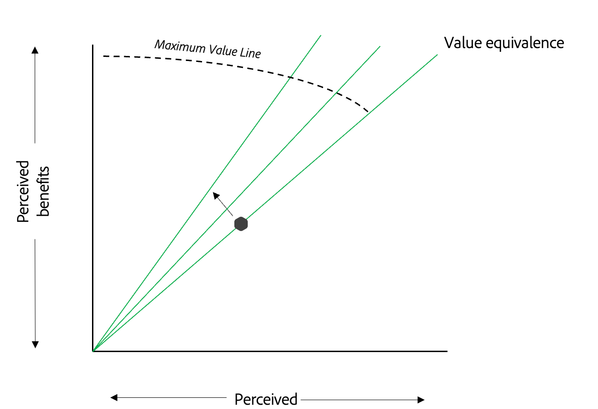
Fig 4.Maximum Value line curves downwards
Balance Customer value and Supplier value
Value in exchange is the way we conventionally talk about value creation. Common sense tells us that value is created by organizations in a products and services they provide, and this is then distributed and sold to markets. Suppliers and customers are two separate entities in the supply chain.
With the increasing emphasis on the impact of Digital Customer Experiences in the supplier-customer relationship rather than just making a sale, the concept of Supplier value has become of interesting as well. See my previous article for more context about how the relationship and Digital Customer Experiential value differs in different stages of the customer journey. Walter et al (2001) argued that supplier value was a neglected, but important, topic. Especially since the supplier will only enter into a relationship as long as it yields net benefits. For supplier value, the same trade-off and equation exists.
For Digital Experiential Value, I argued that the trade-off is a ratio model (equation 3). The question is, does this also apply for supplier value in the digital context? I would say Yes because the same principle of impact of sacrifice and benefits in the trade-off model is applicable in this context. When I put this in the light of my first article on Digital Customer Experience Elasticity where I argued that the relationship economic value for an organization is lost when Digital Customer Experiences exceed expectations or fall short to expectations, I can only ascertain more.
What does that mean when you balance between supplier value and customer value? When evaluating the decision as to whether to seek to increase a customer's value by raising its perceived benefits or reducing the perceived sacrifices, the supplier must evaluate the impact of this action on its own value equation. Obviously, it must therefore be clear that it will accrue genuine benefits because of incurring any extra costs. As figure 5 shows, if the strategy of raising the customer's benefits only raises the supplier's costs this will lead to a reduction in the value of the exchange for the supplier.
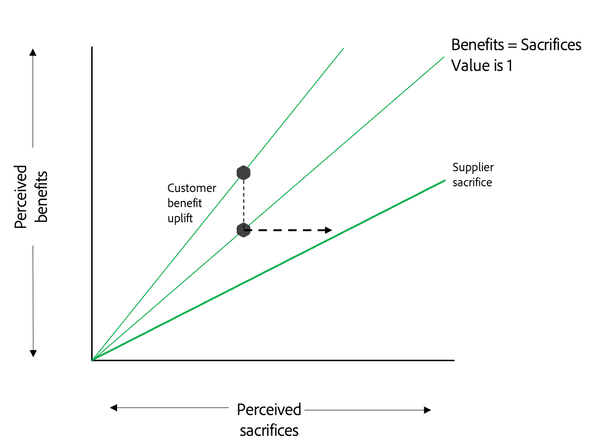
Fig 5. Supplier Sacrifice
On the positive side, the customer benefit uplift could also raise the barrier to competition or positively impact brand image e.g. In certain circumstances, like a highly competitive supply situation, the value gained by the supplier through increasing the customer's perception of the exchange's value may be the safeguarding of the existing relationship with the customer rather than increased profits. However, any action, which will increase the perceived value of the customer, must not decrease the supplier perceived value.
Organizations should strive for a win–win situation which is a complex value equation. Organization often realizes that after examining a customer value equation they are not able to areas to provide added value to a customer and simultaneously to themselves.
Conclusion
There is no single and easy way of understanding customers’ perception of Digital Experiential Value. I used the concept of traditional value equations as one approach to find out if there is a balance, how the trade-off works, and to optimize as an organization for a win-win situation. One insight is clear, if a supplier uses value equations for its customers and seek to perceive its own value equation from a customer point of view then it will gain insights into the way in which its product offering should be developed and presented to customers.
References
Blois, K. (2003). Using value equations to analyse exchanges. Marketing Intelligence & Planning, 21(1), 16-22.
Day, G. $1999), Market Driven Strategy, The Free Press, New York, NY.
Walter, A., Ritter, T., & Gemunden, H.-G. (2001). Value Creation in Buyer-Seller Relationships.
Industrial Marketing Management, 30, 365-377.
Walter, A., Ritter, T. and Gemunden, H.G. $1999), Value-creation in buyer-seller- relationships, Proceedings of the 15th. Annual IMP Group Conference, University College, Dublin.
Woodruff, R.B. $1997), Customer value: the next source for competitive advantage, Journal of the Academy of Marketing Science, Vol. 25 No. 2, pp. 139-53.
Digital Experiential Value
Delivering Digital Customer Experience invariably raise questions about business economics, priorities, and how to invest in it. Without a quantified link tovaluesuch efforts often can’t show clear gains and as such clear foundation to create momentum in your organisation. Read this article to understand how Icombine different classifications of Customer and Business Value and put them in the context of Digital Customer Experiences
Conscious or unconscious Digital Customer Experiences
In this article I argue that there is a great opportunity for organizations to create consious breaks in the customer journey.
Conclusion Paper Digital Customer Experience Elasticity
Download here the full paper of the three articles on Digital Customer Experience Elasticity